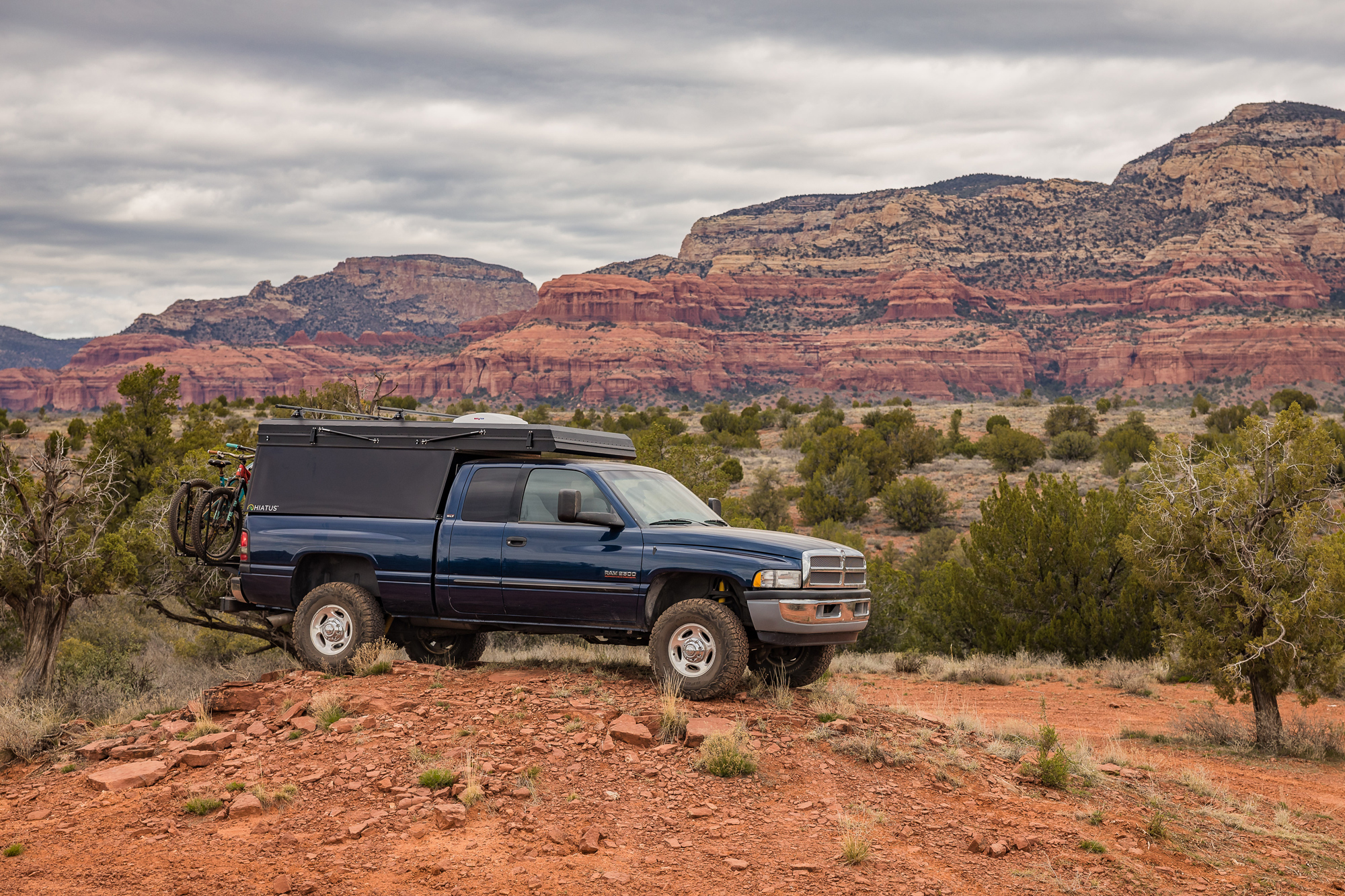Anders Zway may already be a familiar name to some of you. He’s an ExPo Forum regular who goes by the handle Landman. A couple of months ago, Anders pointed me to the full build thread on the ExPo Forum, where he detailed his experience creating what he has dubbed, the “Puller Project,” named after Lewis Puller.
“In classic overland style, we wanted to name our rig, but we thought it would be cool if we made it very ‘American,’ considering [that it’s] an iconic American truck,” said Anders. “My uncle, a highly respected A10 pilot in the US Air Force, turned me onto military novels and studying from a younger age. Therefore, I knew the name and history of Lewis B. Puller. When I was thinking of the most American name I could come up with, Lewis B. Puller (AKA Chesty) seemed so flipping perfect! ‘Chesty’ was a marine (notoriously tough, relentless, rugged, and badass). Considering ‘Chesty’s’ incredible story and history, it made it even more [fitting] as a name for our truck! Thus, we named it the Puller Project, AKA Chesty, the truck.”
The 2001 Dodge Ram 2500 had only 74,000 miles on the odometer and no modifications when Anders found and purchased it. Talk about an incredible find. Having previously owned a Toyota truck and a Sprinter, Anders had enough experience with adventure vehicles to know precisely what he was looking for in his ideal overlanding rig.
Basic Vehicle Details
Chesty is a 4×4, 6-speed manual, 2001 Dodge Ram 2500 with a turbo-diesel Cummins 5.9-liter engine and a custom built-out Hiatus Campers pop-top hardshell truck camper.
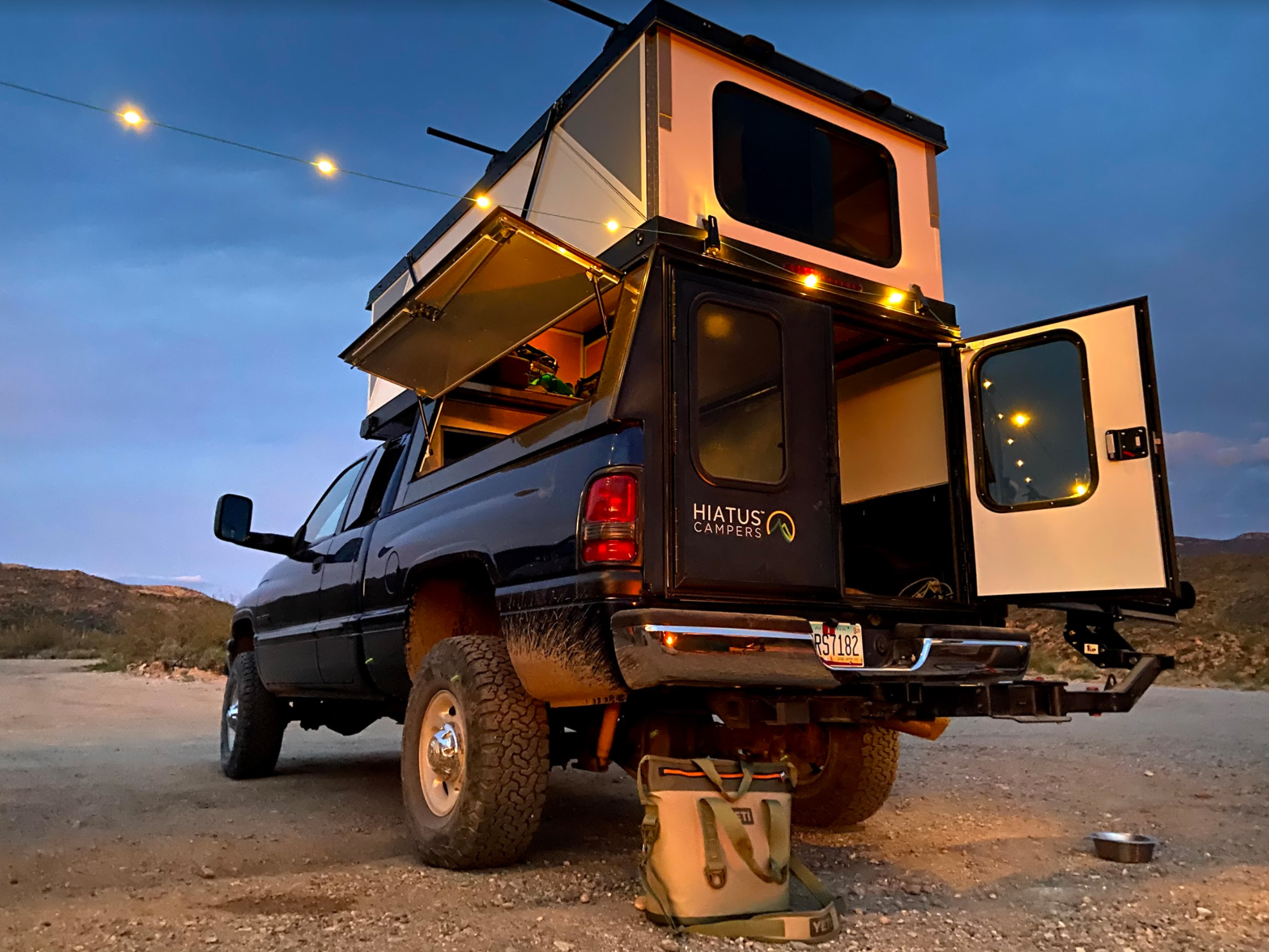
What did you purchase your vehicle for?
Weekend trips mostly, but I’m aspiring to do extended overlanding trips through the United States and Mexico.
Why did you choose this vehicle? What do you love about it?
The fact that I ended up in a diesel Dodge Ram is an interesting story and hard for me to accept sometimes. I was (and still am) a Toyota junkie. I first had an awesome built-to-the-hilt 1990 Toyota pickup with a rooftop tent setup. It was an amazing machine, and I never imagined selling it when I first got it. It crawled rocks, cruised highways, and daily drove. It was a great “do it all” rig. My wife, Gabby, and I truly loved it, but over the years, we wanted something with more comfort and room.
We are avid mountain bikers and [needed] more space to relax in, rest in, and something more comfortable in sustained bad weather. Plus, we had gotten a dog, and the single-cab Toyota was no longer viable for us. Therefore, we made the very tough but necessary decision to sell our beloved Toyota and move on. [Shortly after], we went full tilt, got a 4×4 Mercedes Sprinter, and built it out (I have a ton of pics of that). We kind of got caught up in the VanLife fad, to be honest. We watched too many VanLife YouTube videos. It was fun, but in the end, it was not nearly as capable [or] rugged enough for us. I’m not saying the Sprinter can’t go down rough roads; I just wasn’t willing to beat the hell out of our $85,000 Sprinter van. I was always afraid of scratching it and causing damage that would ruin its resale value, which [ultimately] got in the way of having fun adventures. Also, we hated the new complex diesel DEF engines for many reasons. Lastly, I noticed the Sprinter van market trending down, so after a year of use, we decided to sell it.
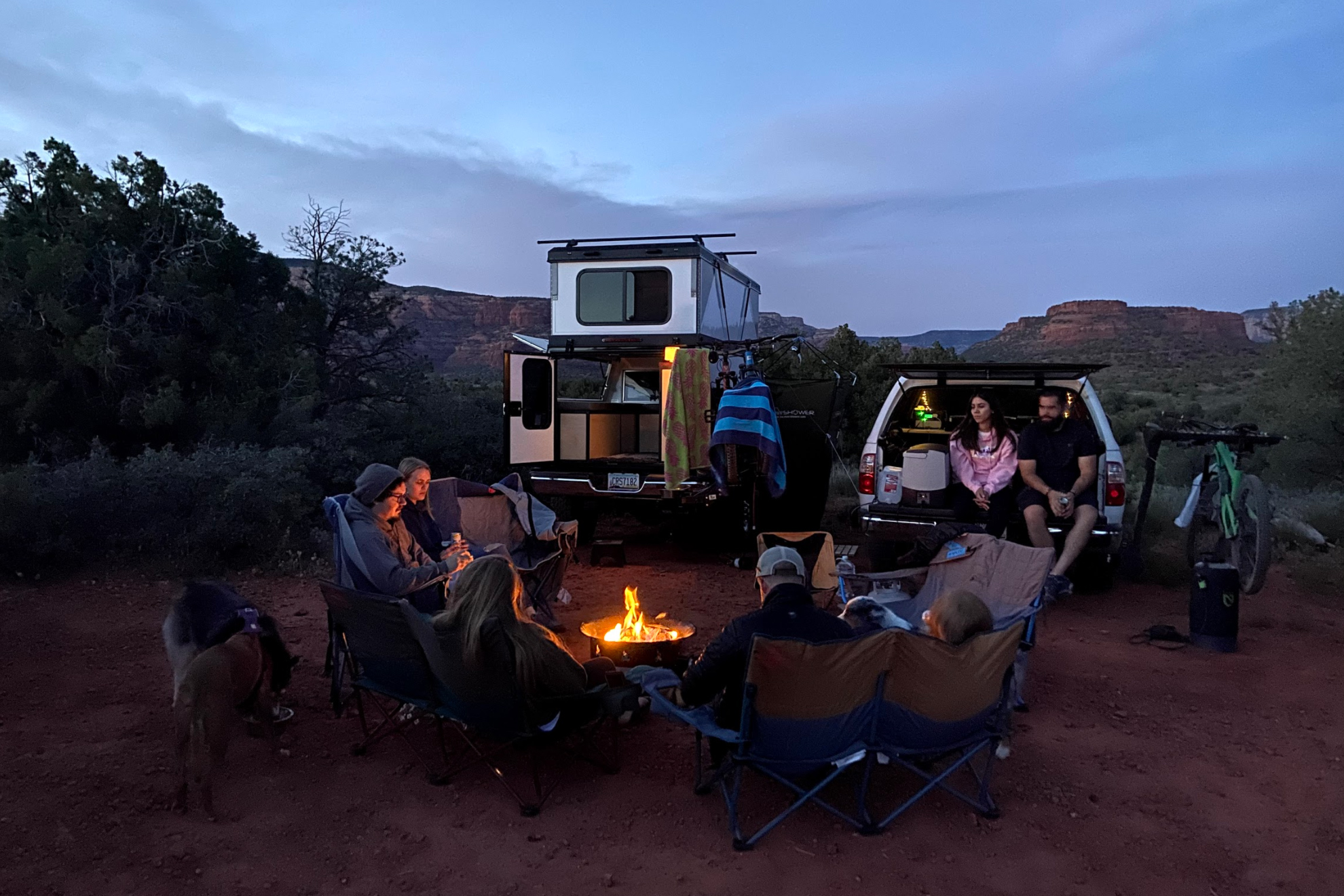
[After selling the] Sprinter, we realized we needed to take a new approach to choose the right rig. The Toyota was too small but was wicked capable off-road, and the Sprinter was too big and not capable off-road. We needed to search for the Goldilocks rig. We focused on [platforms that were practical], not trendy. My buddy Mike, a massive diesel head, suggested I look into diesel rigs as a foundation. Me being a gas engine guy, that seemed alien and not an option. My view at the time was American diesel trucks are ugly, not capable, not tough enough, not reliable enough, [bad gas mileage], and generally weren’t cool enough. I expressed [my concerns] to Mike, who laughed and offered to drive me around in his 2001 Dodge Ram 2500 5.9L diesel truck for some perspective. Actually, we took the truck on a small road trip from Tucson, Arizona, to Prescott, Arizona, for a bachelor party weekend. The moment I crawled up into his Dodge Ram, and he fired up that Cummins 5.9L Diesel engine, it clambered to life and roared like a semi. It rumbled like hell on wheels, and the turbo whistled away. I WAS HOOKED. He threw that huge manual shifter in gear, and we growled down the road. All of a sudden, I went from more or less disliking the American diesel truck to loving it just as much as my Toyota, but for different reasons. As the miles ticked by driving toward Prescott, I bombarded Mike with questions regarding his truck and diesel trucks in general. It kind of went like this:
Me: Mike, how many miles are on this thing?
Mike: 200,000.
Me: Wow, that’s a lot!
Mike: Not for a Cummins; she’s just a teenager.
(I don’t believe him, so I Google how many miles these trucks can go, and SOB, he was right. These trucks commonly go 400,000+ miles.)
Me: Okay, how much does it cost to maintain this beast?
Mike: Change the oil, change the air filter, get a new fuel system, change the fuel filters, and you’re golden—that’s it.
(I Google that, again, he’s right.)
Me: That’s great and all, but this heavy pig can’t four-wheel well at all.
Mike: (He pulls his phone out and shows me a video of him wheeling Chiva Falls, no problem).
**Chiva Falls is a gnarly, local four-wheel-drive track that is very challenging.
Me: Okay, well, this thing is slow and sluggish, though.
Mike: Oh, yeah? (He floors it, and I get pinned in the seat going down the highway).
(I owned a Subaru STI in the past, and this big-ass truck was MUCH faster)
Me: Well, this thing gets awful mpgs.
Mike: You’ll see. (By the end of the trip we averaged 21 mpg).
This went on for four hours. I interrogated Mike about everything, just trying to find a reason NOT to betray my Toyota buddies and buy an American diesel truck, but no such luck. I was hooked, I was going to get one, hell or high water. I fell in love with the diesel engine, the dated-looking interior, the early 2000’s look, and all other nuances. It became classic to me, and all of a sudden, I understood why people loved these old diesel trucks so much. It’s an “it factor.”
I knew I needed something bigger than my Toyota but smaller than the Sprinter. It needed to be reliable, rugged, capable off-road, could laugh at bad weather, and crush thousands of miles of dirt roads. I wanted it to be easy to work on, easy to fix, and more importantly, something that doesn’t need to be fixed. It had to have good performance, regardless of the terrain. The Dodge Ram with the 5.9 Cummins turbo-diesel checks almost all of those boxes. Next came the hardest part, finding one that wasn’t beat up, with low miles, that wasn’t stupidly expensive. Basically, [what I’m describing doesn’t exist].
But after months of looking, I found the unicorn. It was a Patriot Blue 4×4 2001 Dodge Ram 5.9L Cummins turbo-diesel (non-53-block) with a 6-speed manual transmission and only 74,000 miles on it. I bought it sight unseen from the owner and had it shipped to me. My buddy Mike helped me cross some T’s and dot some I’s to make sure the truck was in good shape. A big thanks to him.
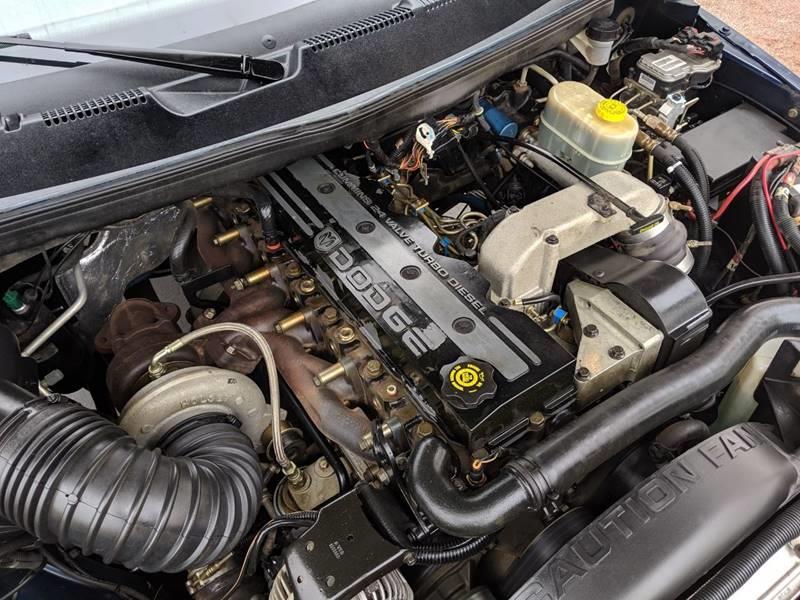
At this point in the story, I think I should state that I knew we already wanted a Hiatus camper. My brother Zane had been following this little start-up company for about two years and told me about them when I was building out my Sprinter van. Once I sold the Sprinter, I knew I was going to get a Hiatus. I didn’t want to go the normal route and get a Four Wheel Camper on a flatbed. I wanted something different. Also, the hard-wall system on the Hiatus camper is an absolute game-changer. It is, without a doubt, the most stunning, well-balanced, well-thought-out, well-designed camper that suited my needs. Their clever hard-wall folding system is just perfect. It just pops up and down so easily. The options they offer are outstanding. It’s a young couple that builds these campers; they are wonderful people that worked super hard with passion and created something completely outside the box in the overlanding industry.
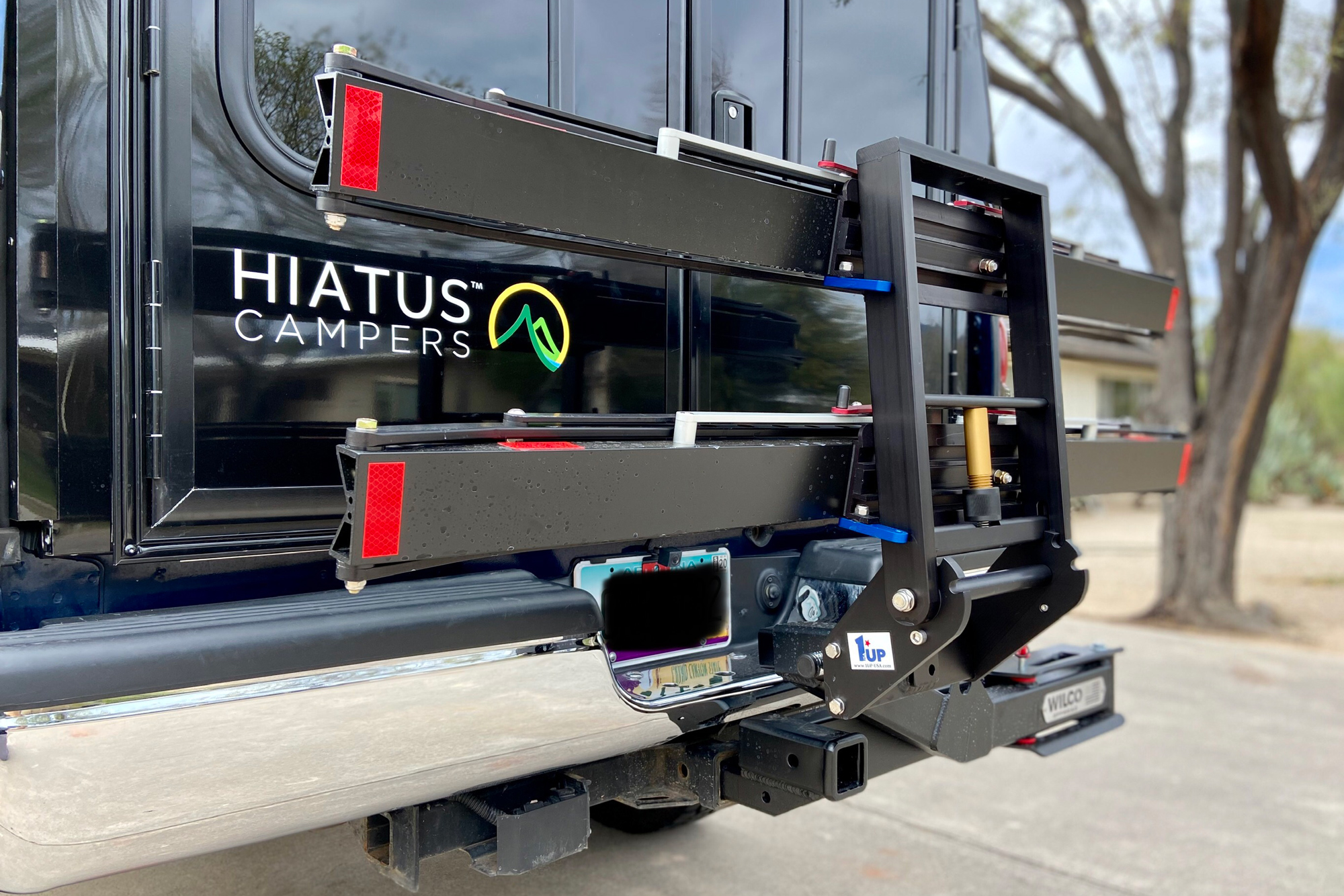
Does your particular vehicle have a story? Any previous owners?
The truck has two owners before me. It’s lived most of its life here in Arizona and a few months in California (where I bought it from).
What is the most memorable adventure you have taken in your vehicle?
Our truck build is still new, so we have not had the chance to stretch our legs with it. That being said, we have taken some wonderful trips to Sedona, Arizona, for some mountain biking. We love rolling into a parking lot, popping up the Hiatus, cooking breakfast, going for a killer ride, and coming back to rest up comfortably. In the money months, we are planning some extended trips, but with this COVID stuff, we will just have to see what happens.
Is your vehicle stock or modified?
Proudly this truck is bone stock, except I have a FASS fuel system in it. I was very tempted to do a full list of extensive off-road upgrades, tunes for the engine, and the whole thing, but practicality was our mantra. With so many of the Dodge Rams being chopped and tuned, I thought it would be cooler to leave this one stock. They are so hard to find stock that it seemed wrong to do anything much to it.
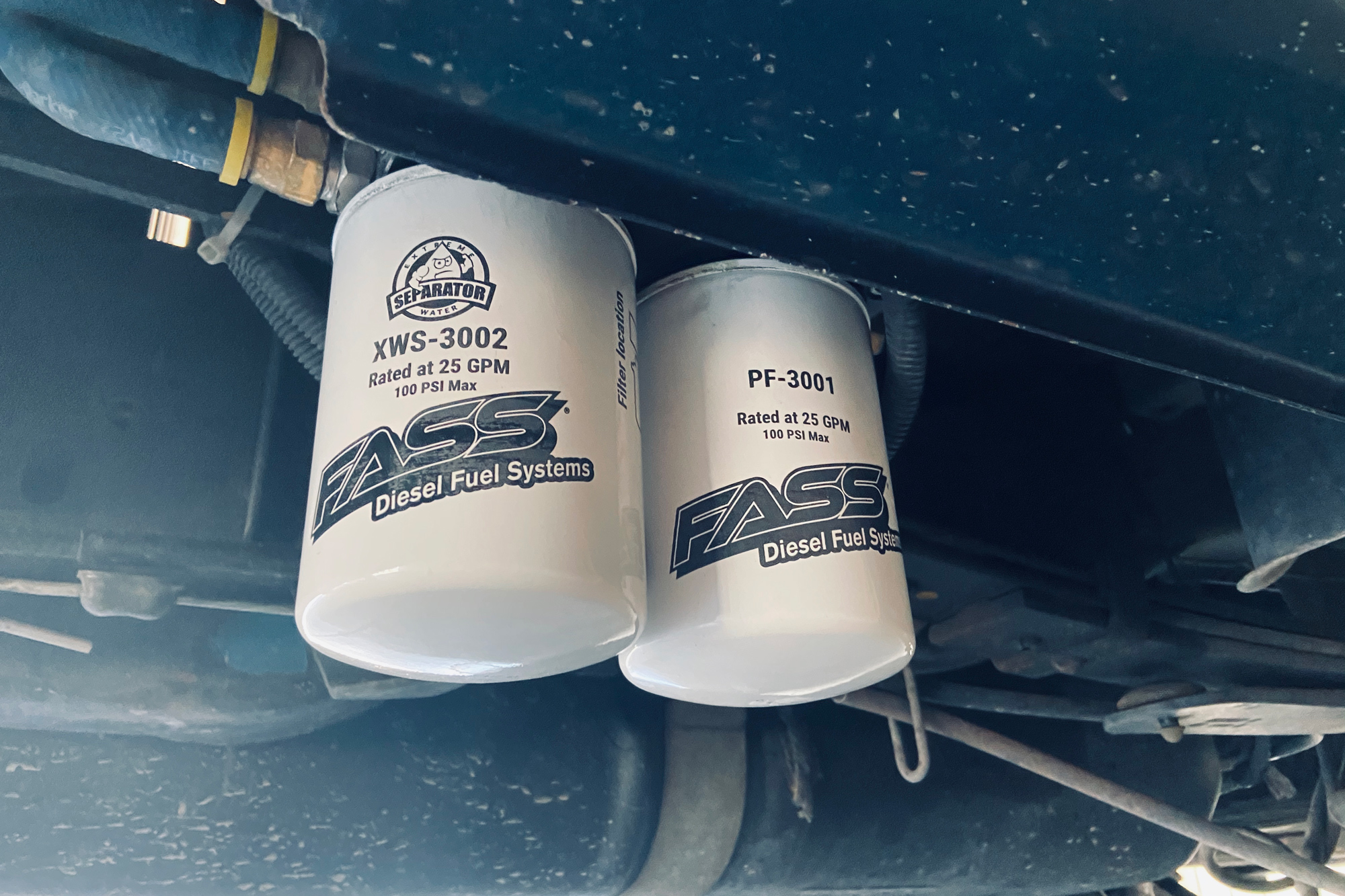
The Hiatus camper and layout is amazing. The layout is L shaped with bench seating and massive amounts of storage. We have a stunning little kitchen area on the passenger side with a mahogany countertop (made by Summit Woodworking in Tucson). We installed a Ruvati sink, a Costway fridge that comes out on sliders, a Yeti 1400 solar system, Maxxair fan, Yakima roof rack, a Wilco swing arm with a 1Up bike rack, and some other odds and ends. All the [seating] and kitchen are made of steel with birch wood. The best part is that all the wood panels are held in place by magnets. Each birch-wood panel can just pop out to be refinished, painted, or fixed over time with great ease. Also, by being able to pop all the wood panels off of the steel framing, unpacking, repacking, and fixing things is super easy (especially so as not to be cramped or bent over while doing so). Just pop off the panels, do what you need to and slap them back in. We drilled and recessed magnets into the backside of each wood panel.
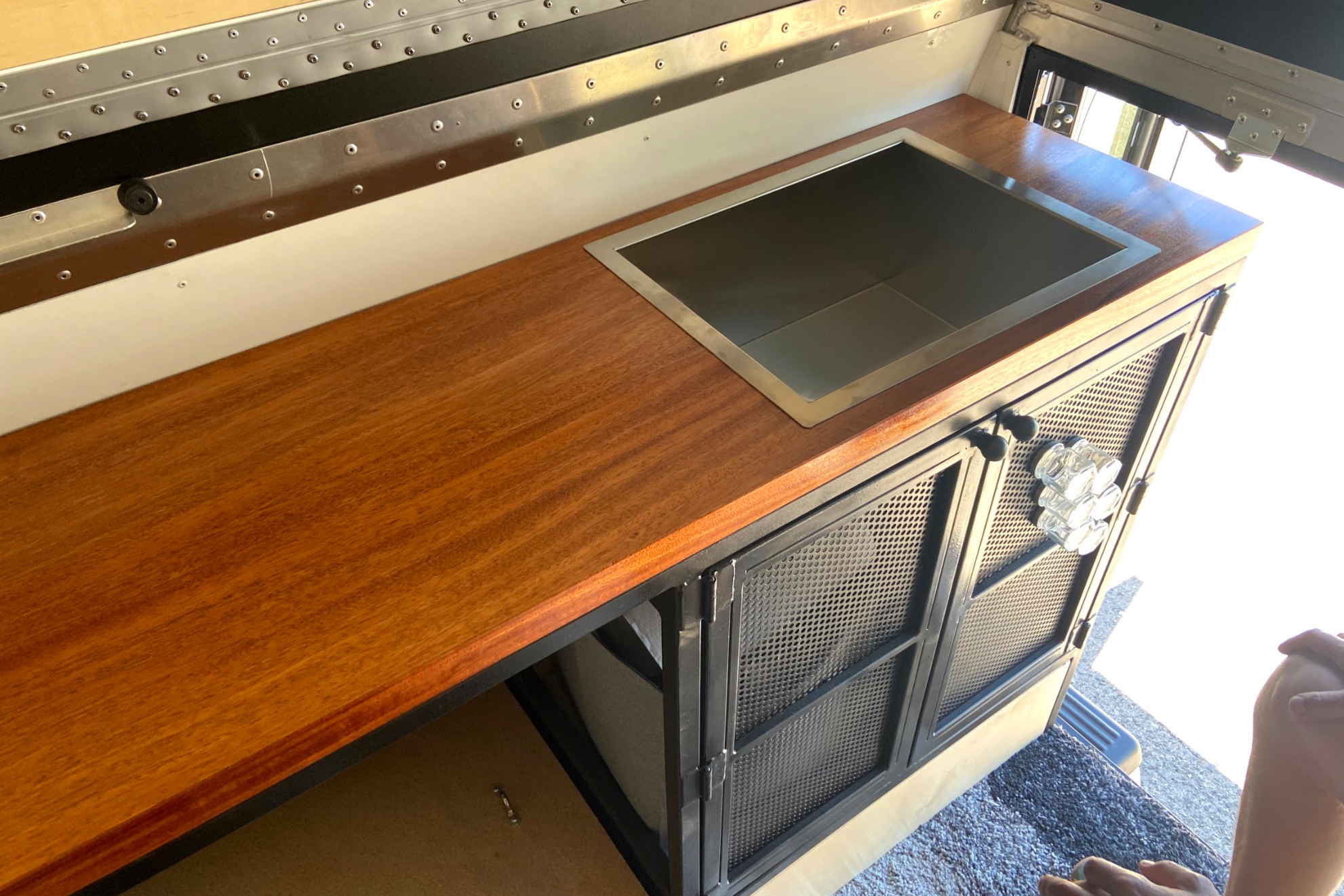
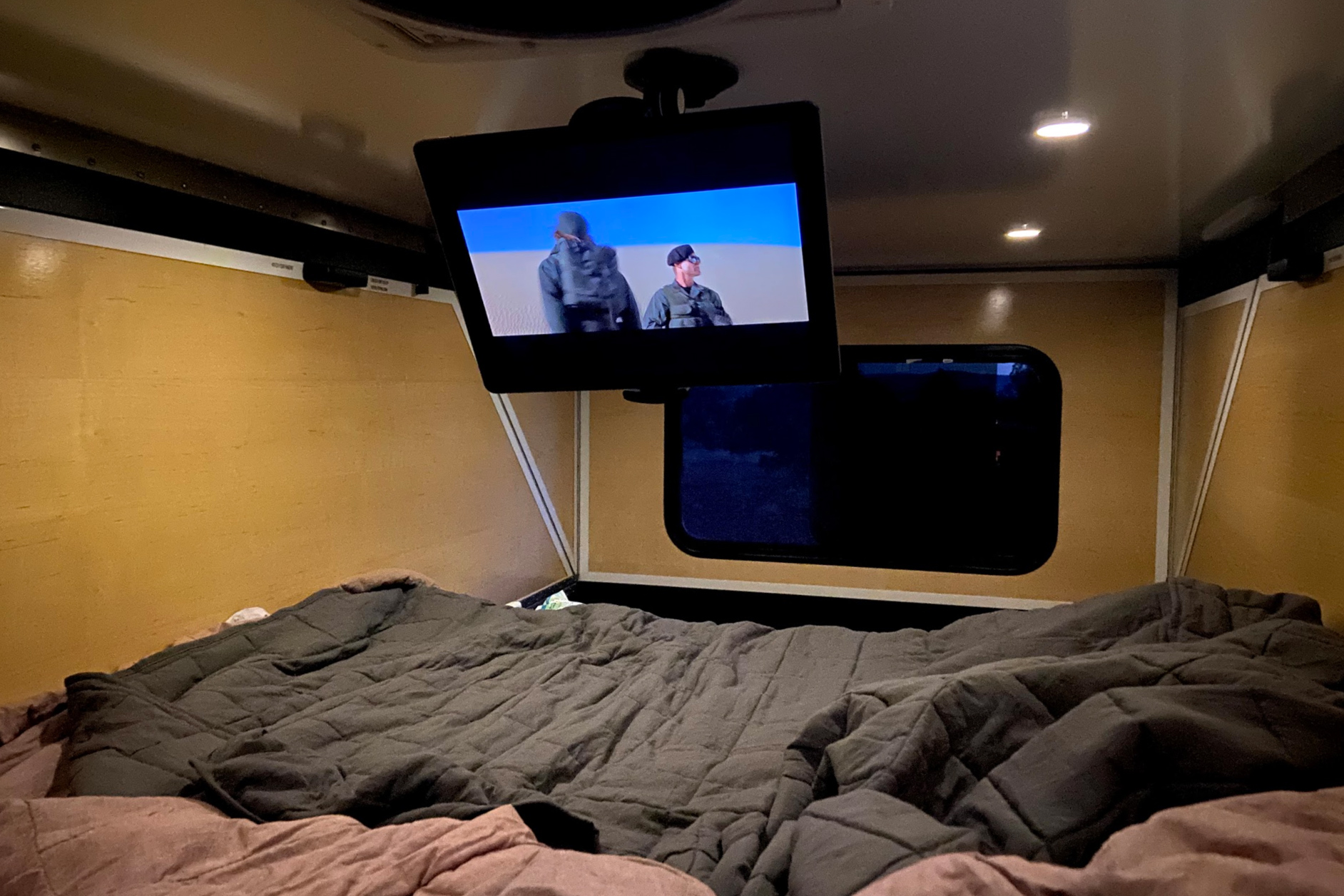
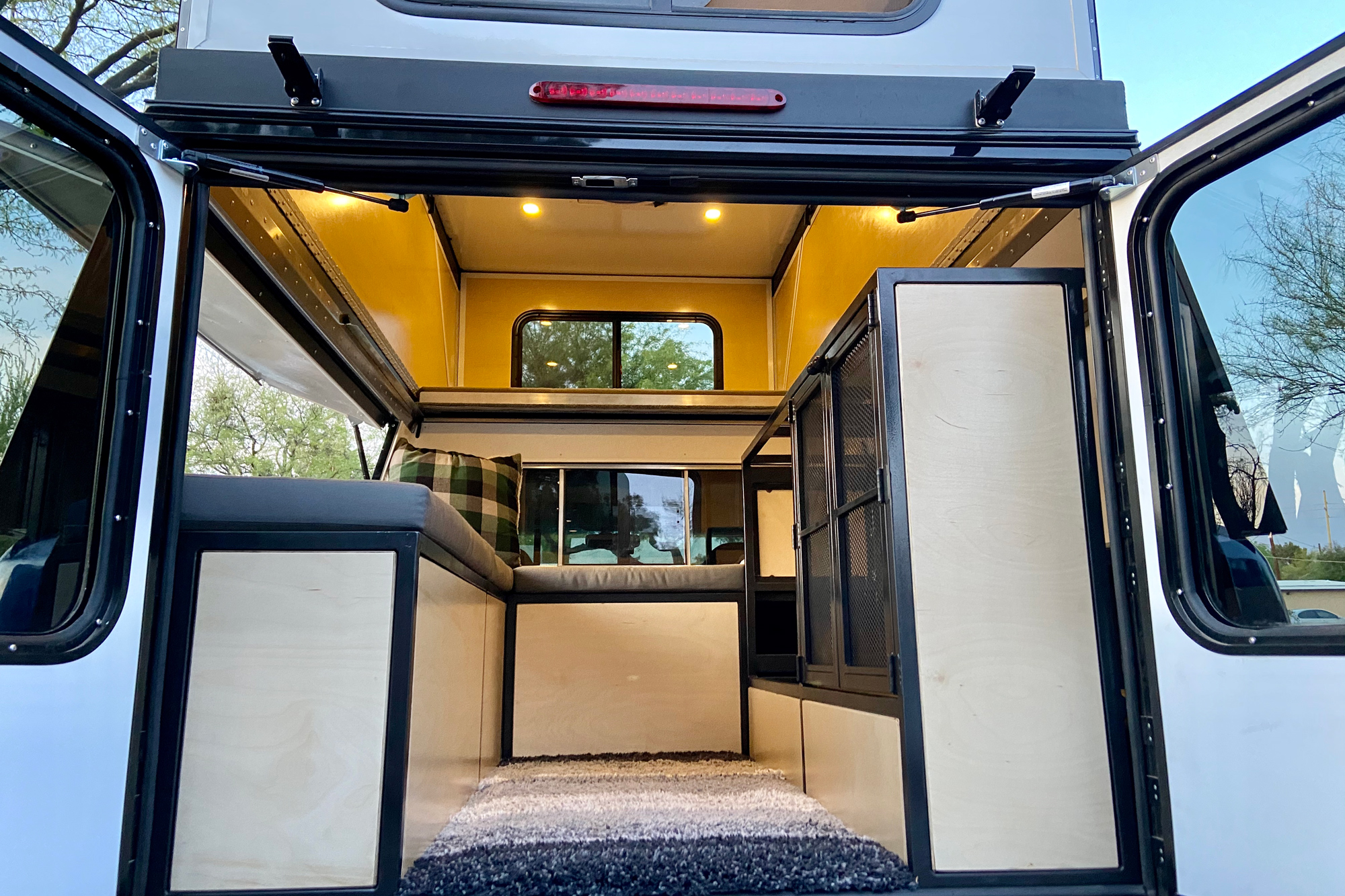
Do you have any additional modifications or changes planned?
Nope, for now, the truck and camper are just perfect for us. We may change things [incrementally if needed].
Do you carry any accessories with you?
We have converted the space under our rear bench seat to carry all of our tools and recovery gear.
Follow Anders on Instagram to see what he and Gabby are up to.


